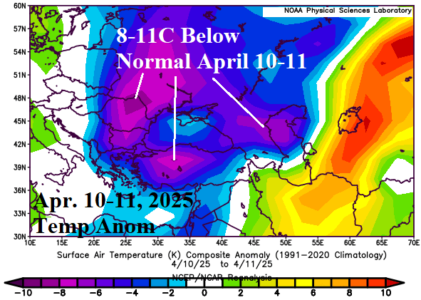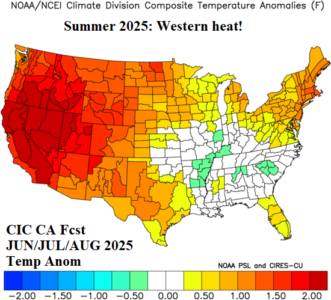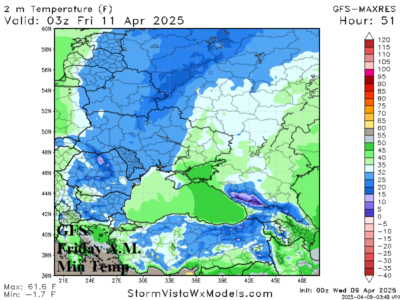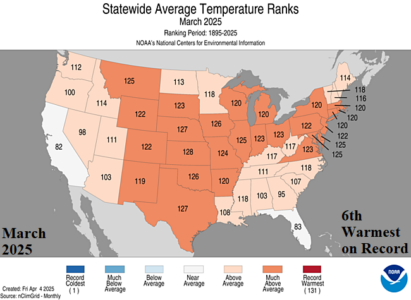04/14/2025, 5:19 am EDT
A late season cold wave has produced significant crop damage to the Eastern Europe/Black Sea/Turkey/Southwest Russia region. The farthest east cold spike was April 10-11 causing the worst freeze since 2014 in Turkey. The peak cold during April 7-9 was across Romania and Ukraine. Coldest mornings during the freeze events were in the -10’sC!




